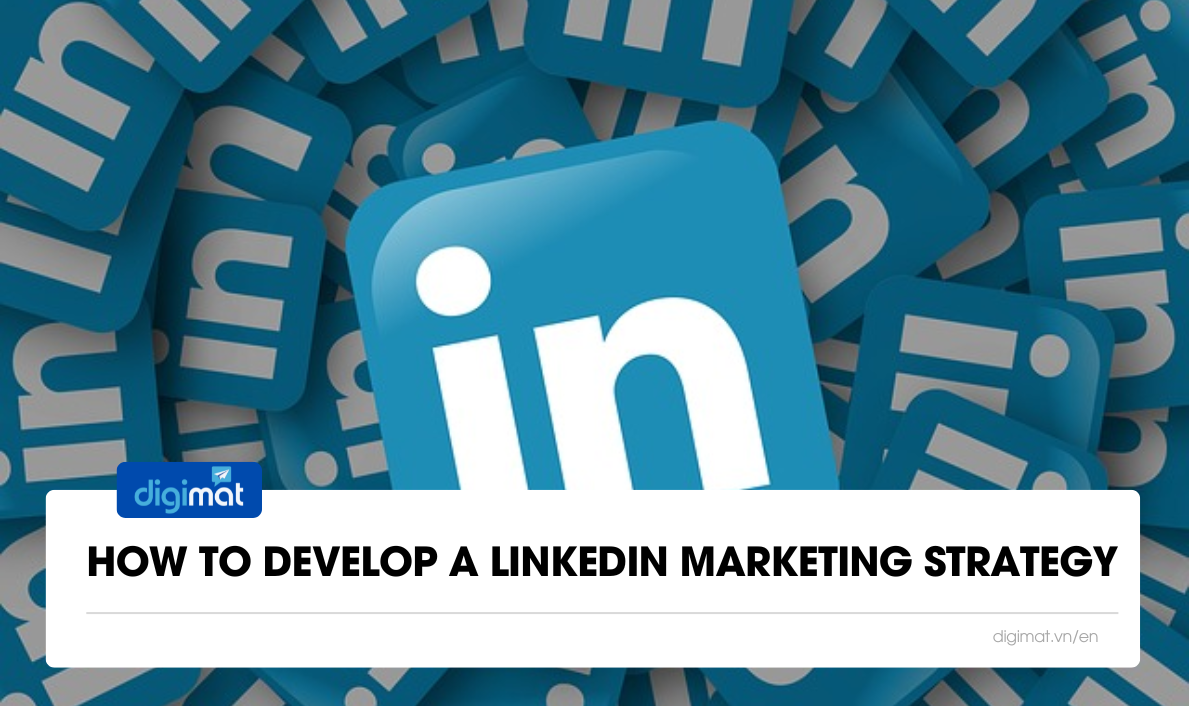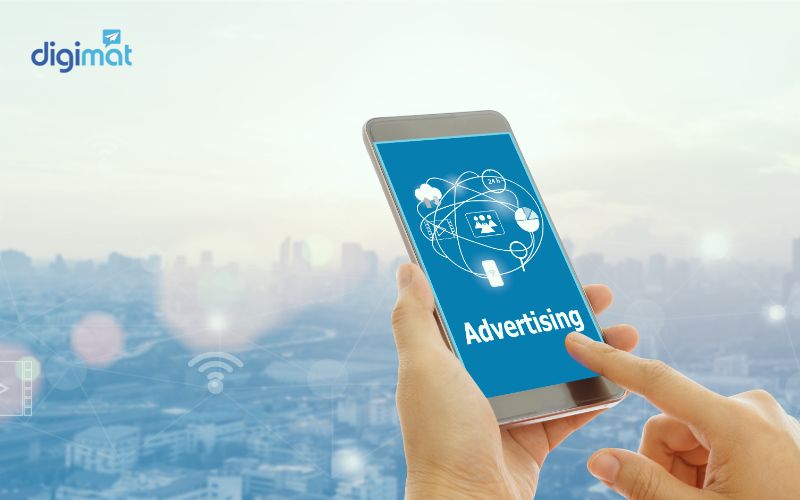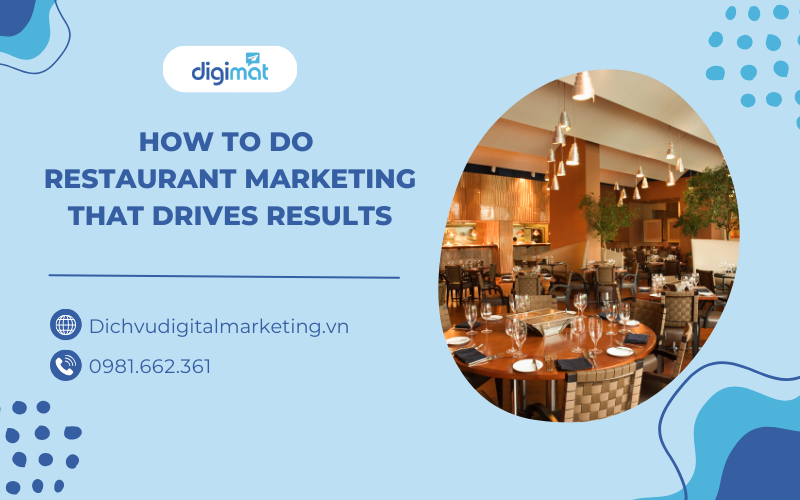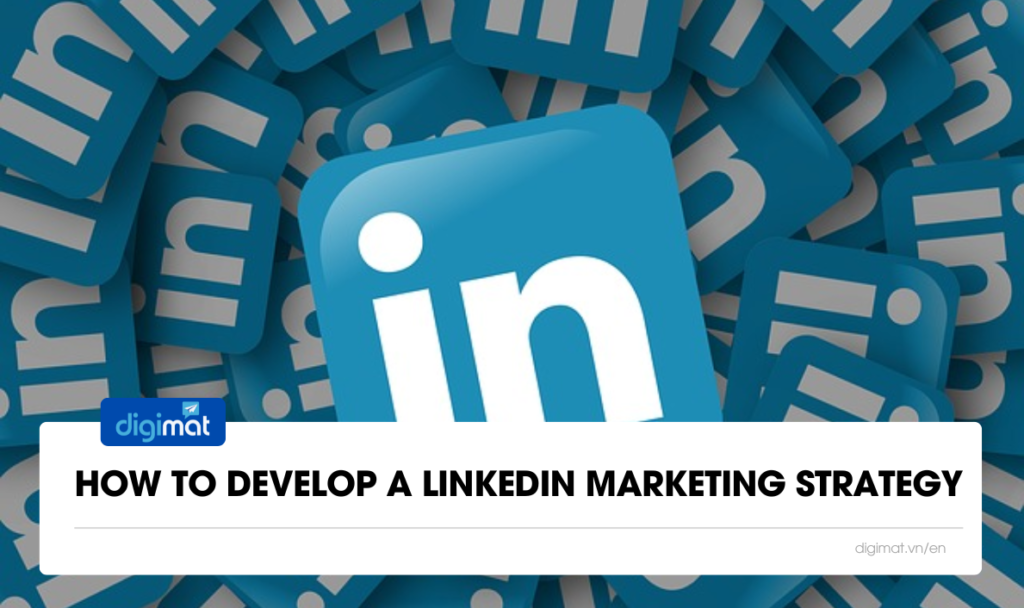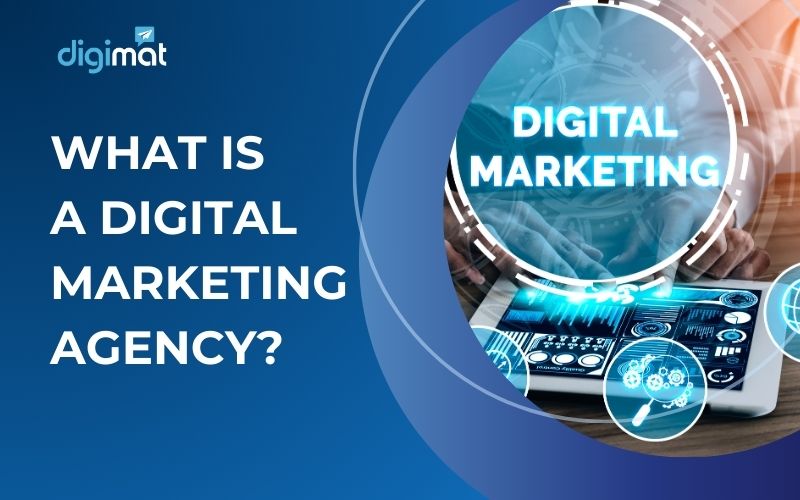LinkedIn is not only a platform for professional networking but also a powerful marketing tool that can help businesses elevate their brand image and expand their customer base. So, how can you develop an effective LinkedIn marketing strategy? Let’s explore the key steps to build this strategy and achieve the success you’re aiming for.
What is LinkedIn Marketing?
LinkedIn marketing involves using the LinkedIn platform to promote a brand, product, service, or individual with the aim of connecting with professionals, businesses, and potential clients. With its focus on the professional environment, LinkedIn offers a great opportunity to build relationships, increase brand visibility, and boost sales in both B2B (business-to-business) and B2C (business-to-consumer) sectors.
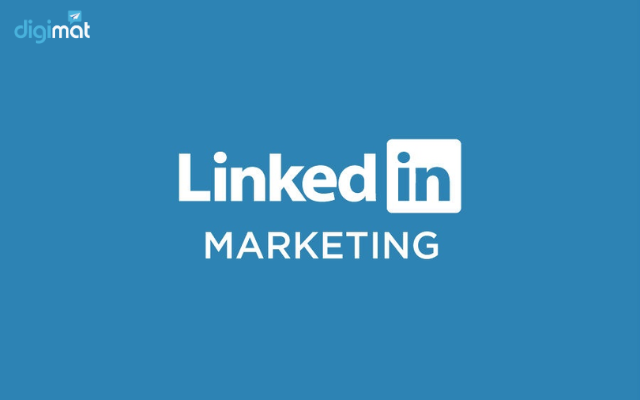
What is LinkedIn Marketing?
The Role of LinkedIn Marketing for Businesses
LinkedIn marketing plays a crucial role in helping businesses create value, enhance business efficiency, and build a professional image. Here are some specific benefits:
Supports SEO Website Effectively: LinkedIn is an ideal platform for sharing quality content, driving traffic, and improving website search rankings. Optimized posts on LinkedIn increase the chances of visibility on search engines.
Boosts Sales and ROI from Marketing Campaigns: LinkedIn provides a business-focused environment that helps businesses reach potential clients, thereby increasing sales and boosting profit margins. With precise targeting, marketing campaigns on LinkedIn deliver higher ROI.
Builds and Expands Professional Networks: LinkedIn helps businesses connect with professionals, partners, and ideal customers. It’s a place to expand your network and generate collaboration opportunities.
Attracts and Recruits Potential Talent: LinkedIn isn’t just for business networking; it’s also a powerful recruitment tool. Businesses can search for suitable candidates, attract talent, and build strong teams through recruitment campaigns on LinkedIn.
Runs Brand Promotion Campaigns: LinkedIn supports businesses in running media, advertising, and promotion campaigns to build and develop their brand. Through quality content and creative ad campaigns, businesses can increase brand awareness within the professional community.
How to Develop an Effective LinkedIn Marketing Strategy
LinkedIn is an ideal platform for businesses that want to build their brand, expand connections, and grow their business. To maximize LinkedIn’s potential, businesses need a clear and effective marketing strategy. Here are the specific steps to help you develop a professional LinkedIn marketing strategy:
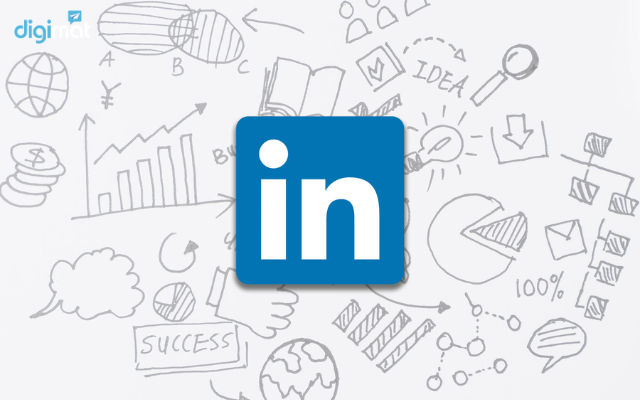
How to Develop an Effective LinkedIn Marketing Strategy
Step 1: Define Your Strategic Goals
Goals are the core of any marketing strategy. On LinkedIn, businesses can set goals like:
– Increase brand awareness
– Attract potential clients
– Recruit top talent
– Promote content
Setting clear goals helps businesses measure and optimize their strategies effectively.
Step 2: Research Your Target Audience
Understanding your ideal customer is key to building an effective strategy. Analyze:
– Demographics: Age, location, job titles
– Behaviors: Interests and interactions on LinkedIn
– Needs: Problems they want solved through your product or service
The Audience Insights tool on LinkedIn is an invaluable resource for analyzing and identifying your target audience.
Step 3: Optimize Your LinkedIn Profile
Your LinkedIn company profile is the face of your brand. To attract potential clients, you need to:
– Design a professional cover image and logo
– Write a concise description using relevant industry keywords for SEO
– Update your contact details, service offerings, and major achievements
An attractive profile not only helps you make a great first impression but also improves search ranking.
Step 4: Create Quality Content
Content is the deciding factor for the success of your LinkedIn marketing strategy. Build a content plan with:
– Educational posts: Share knowledge or useful tips related to your industry
– Branding posts: Showcase products, services, and customer success stories
– Interactive posts: Ask questions and encourage discussions to boost engagement
A consistent posting schedule (3-4 posts/week) helps maintain brand visibility and engage more customers.
Step 5: Leverage LinkedIn Ads
LinkedIn ads are a powerful tool to expand your reach. You can use:
– Sponsored Content: Advertise posts to attract engagement
– Message Ads: Send direct messages to targeted customers
– Dynamic Ads: Personalize ads based on the audience
Precise targeting based on job titles, industry, or geographic location increases the effectiveness of campaigns.
Step 6: Analyze and Optimize
It’s crucial to assess and analyze the effectiveness of your strategy. Use LinkedIn Analytics to track:
– Reach
– Engagement
– Conversions
This will help you optimize content, adjust advertising campaigns, and improve marketing results.
See more: What Is A Digital Marketing Agency?
LinkedIn Marketing Strategy to Help Your Business Lead the Way
Target High-Conversion Potential Customers
One of the most powerful aspects of LinkedIn marketing is its ability to help businesses effectively target high-conversion potential customers. Unlike other social media platforms, LinkedIn allows you to narrow your search to a highly specific audience based on factors such as industry, company size, job position, and more. By doing so, businesses can ensure they are only reaching out to individuals who are most likely to be interested in their product or service and ultimately convert into paying customers.
For instance, if you run a business offering accounting software tailored to startups, you can create an advertising campaign that specifically targets companies in Vietnam with fewer than 100 employees. You can further refine the targeting by showing your ads only to decision-makers, such as managers or executives within these companies. This level of precision ensures your efforts are focused on the right audience, optimizing your marketing budget and increasing your chances of success.
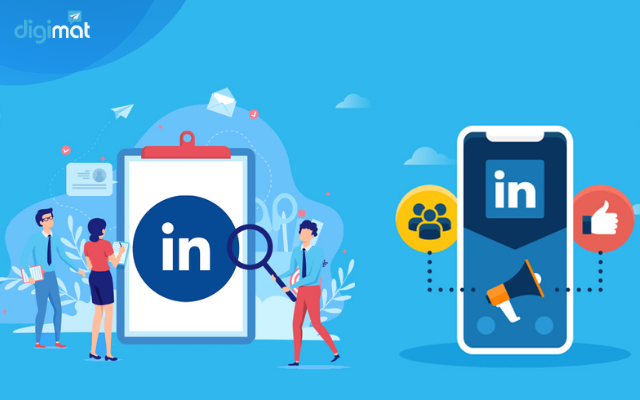
LinkedIn Marketing Strategy to Help Your Business Lead the Way
Leverage Organic Search for Greater Visibility
Optimizing your LinkedIn profile with relevant keywords is a simple yet effective way to improve visibility on the platform and increase your chances of appearing in organic search results. By researching the most relevant keywords and phrases for your industry, you can strategically incorporate them into your LinkedIn profile, such as in your job description, title, summary, and skills sections. This will help ensure your profile shows up when potential customers search for services or products like yours.
However, it is essential to use these keywords naturally, making sure that the content remains readable and engaging. The goal is to ensure that your profile feels organic and provides value to those visiting it, rather than overwhelming the reader with an unnatural keyword-stuffing approach.
Build a List of Potential Customer Emails Using InMail
LinkedIn’s InMail feature is a powerful tool for outreach and is particularly effective for businesses looking to connect with potential customers directly. Although InMail is a paid feature (priced at $79/month), it can provide significant value by enabling businesses to contact virtually any LinkedIn user, even if they are not part of your direct network.
InMail allows you to send personalized messages to target users, bypassing the limitations of connection requests or invitations. By crafting tailored messages, businesses can engage potential leads and build relationships that could lead to conversions. InMail provides flexibility by allowing you to reach out to a larger pool of prospects without being limited by the number of connection requests you can send each month.
Use Sponsored InMail to Expand Your Reach
In addition to InMail, LinkedIn also offers Sponsored InMail as a way to amplify your content’s reach and target specific customer groups. Sponsored InMail allows your message to appear directly in the inbox of your target audience within their LinkedIn feed, increasing the likelihood of interaction. This format is akin to Facebook Ads but offers more precise targeting. You can customize your ads to display specific information, such as your company name, job titles, industry, and even skills, allowing you to speak directly to your ideal customer profile.
Sponsored InMail is particularly effective when used for educational content, knowledge-sharing marketing strategies, or promoting expert insights. People are increasingly cautious about traditional advertising but still appreciate free and valuable content. Using Sponsored InMail to promote content like infographics, videos, or eBooks can be an excellent way to build trust and interest among your target audience. When the content resonates and meets their needs, this can result in high conversion rates.
Post High-Quality Content for Engagement
To succeed on LinkedIn, simply posting random links and expecting engagement will not yield results. Instead, focus on sharing high-quality, relevant content that addresses the challenges and needs of your target audience. The content should either help your audience solve a problem, improve their performance, or enhance their knowledge of a specific topic. At the same time, your posts should showcase your expertise and authority in your field. By doing so, you position your business as a trusted leader in your industry, increasing the chances of generating meaningful business opportunities.
If you must share a link, it’s better to place it in the comments section of your post instead of the main body. This approach will not only preserve the post’s reach but also encourage more interaction from your audience. Remember that LinkedIn values a variety of content types, from success stories and insightful tips to personal anecdotes and industry achievements. Posting diverse, unique, and engaging content helps build relationships and keeps your audience coming back for more.
Post Content Directly on LinkedIn for Better Visibility
Posting content directly on LinkedIn is one of the most cost-effective strategies for increasing visibility and engagement. By publishing original posts on LinkedIn, you boost your chances of ranking higher on LinkedIn’s search engine, which in turn drives more traffic to your business page. If your post is engaging and relevant, LinkedIn will amplify it further by tagging it with relevant hashtags, which helps attract more readers. This strategy not only increases exposure but also boosts your credibility within your industry.
Optimize Your LinkedIn Business Profile for Maximum Impact
Once you’ve created a LinkedIn business page, it’s important to optimize your profile to make it more visible to potential customers. You can do this by ensuring all necessary information is filled out under the “Edit page” section. Completing every section of your profile is crucial for achieving a high SEO ranking within LinkedIn’s internal search results. A well-optimized profile will also appear 30% more frequently in search results than a profile that is incomplete. This simple step ensures your business is represented clearly and professionally, giving you a competitive edge.
Set Up a Custom URL for Your Profile
For businesses that have been active on LinkedIn and have built a solid customer base, setting up a custom URL is an important step to improve your online presence. A custom URL makes it easier for potential clients, partners, and customers to find your business on both LinkedIn and search engines like Google. It will contain key details, such as your business name, which can be critical when networking or engaging with new contacts.
Having a custom URL will increase the likelihood of your profile appearing in Google search results, enhancing your online visibility. This simple adjustment can help solidify your business’s presence and make it easier for interested prospects to connect with you.
See more: Top Facebook Keyword Checker Tools You Should Know About
Support Tools for an Effective LinkedIn Marketing Strategy
To implement your LinkedIn marketing strategy professionally and optimally, using the right support tools is essential. Here are some tools that can help you manage content, create impactful visuals, and optimize campaign results:
Canva
Canva is a user-friendly tool for creating professional designs without needing advanced graphic skills. Use it to design LinkedIn cover photos, posts, infographics, or specialized documents.
SlideShare
SlideShare, owned by LinkedIn, is perfect for uploading professional documents, reports, or presentations. It helps share in-depth information, build credibility, and drive traffic to your LinkedIn profile.
Hootsuite
Hootsuite is a powerful tool for managing multiple social media accounts, including LinkedIn. It allows you to schedule posts, track performance, and engage with users effectively.
IFTTT (If This Then That)
IFTTT helps automate processes in your LinkedIn marketing strategy. For example, automatically share LinkedIn posts to other platforms like Twitter or Facebook, store interactions or lead data in Google Sheets, and receive notifications when someone mentions your brand.
Conclusion
A LinkedIn marketing strategy not only helps businesses establish a professional presence but also opens up opportunities to connect with potential partners, ideal customers, and quality talent. By applying the right steps and using the supporting tools, your business can stand out in an increasingly competitive environment. We hope this article by Digimat has provided you with clear insights and actionable steps to create an effective LinkedIn marketing strategy. Start today and transform LinkedIn into one of your most powerful marketing channels!

